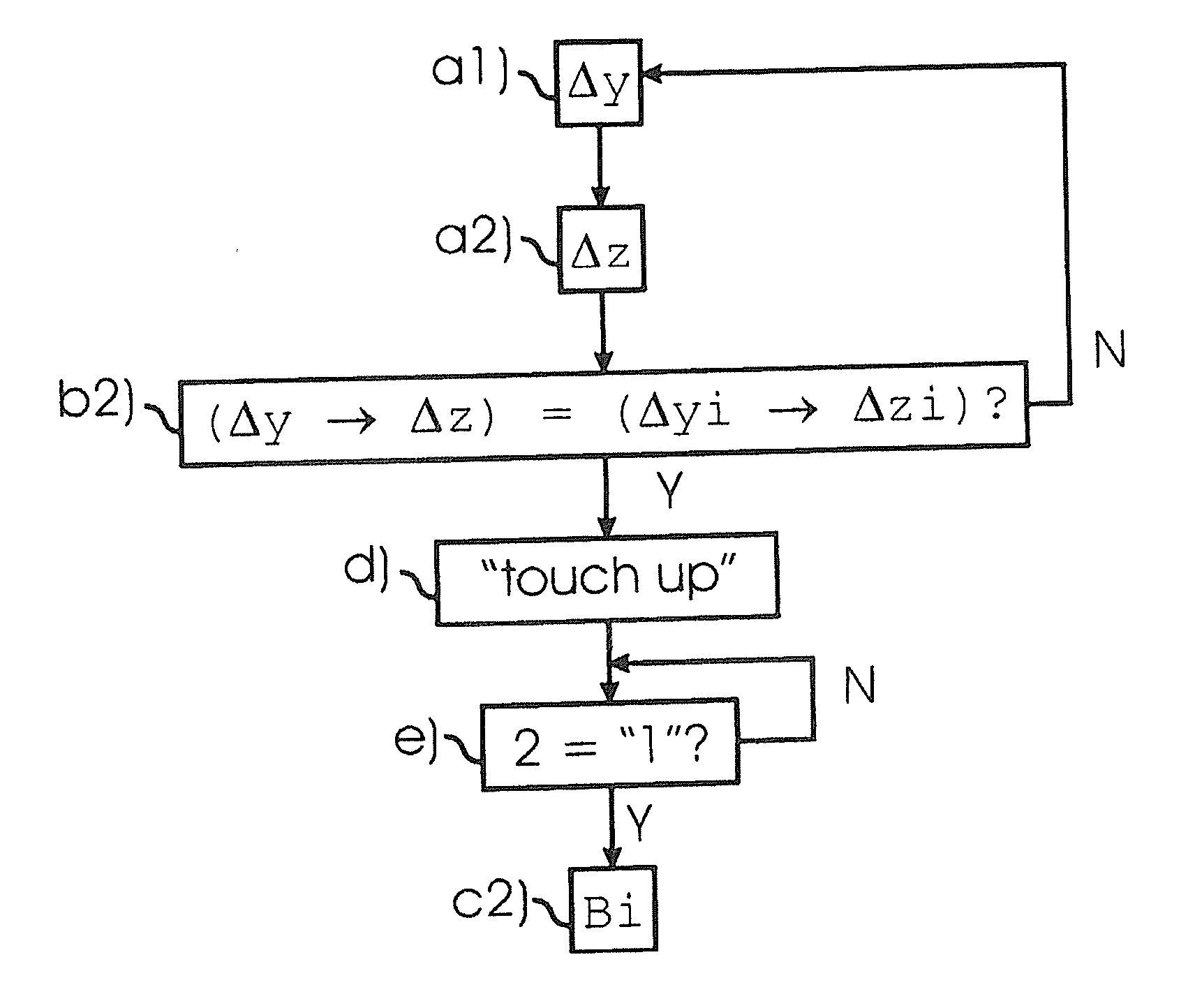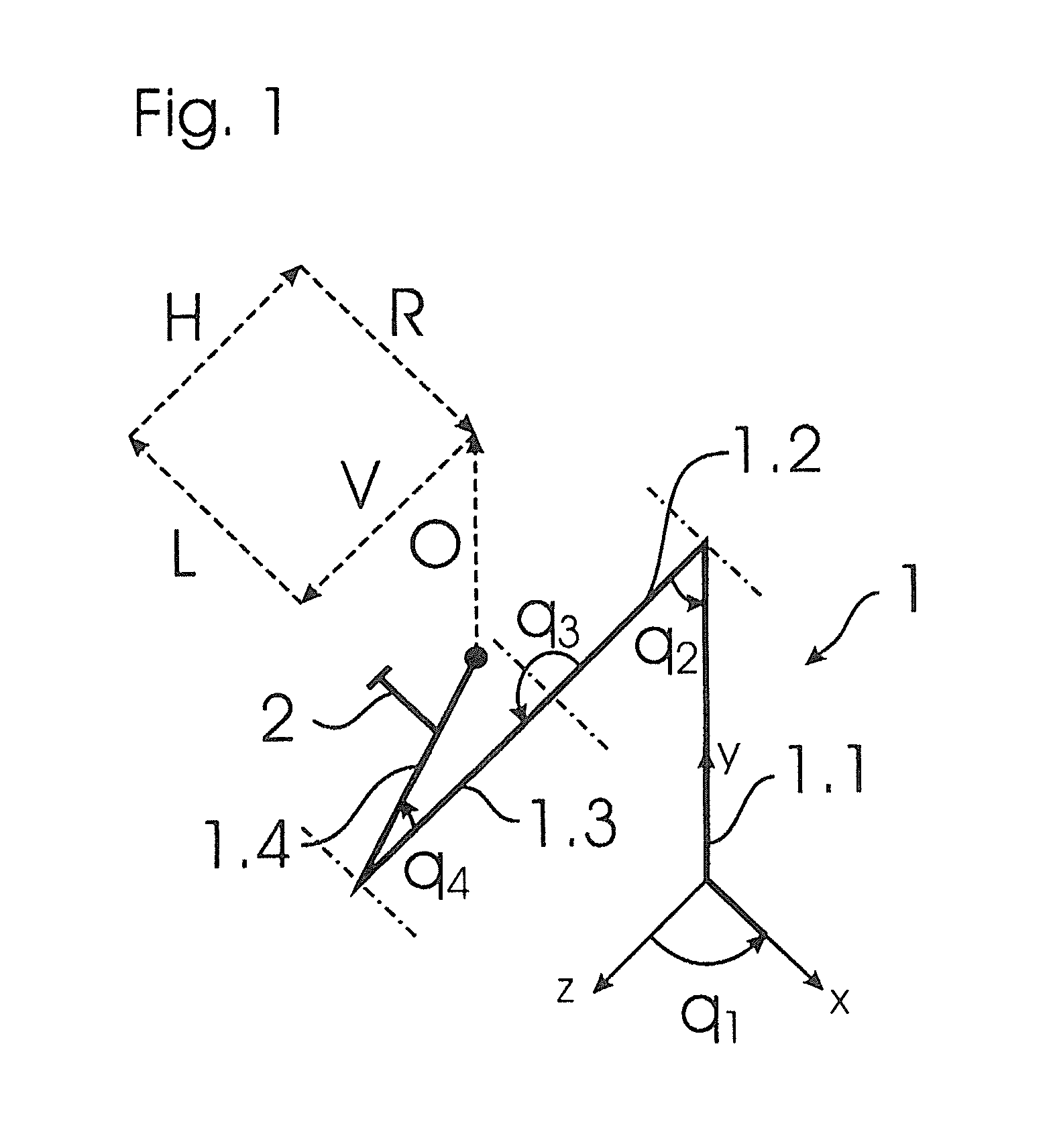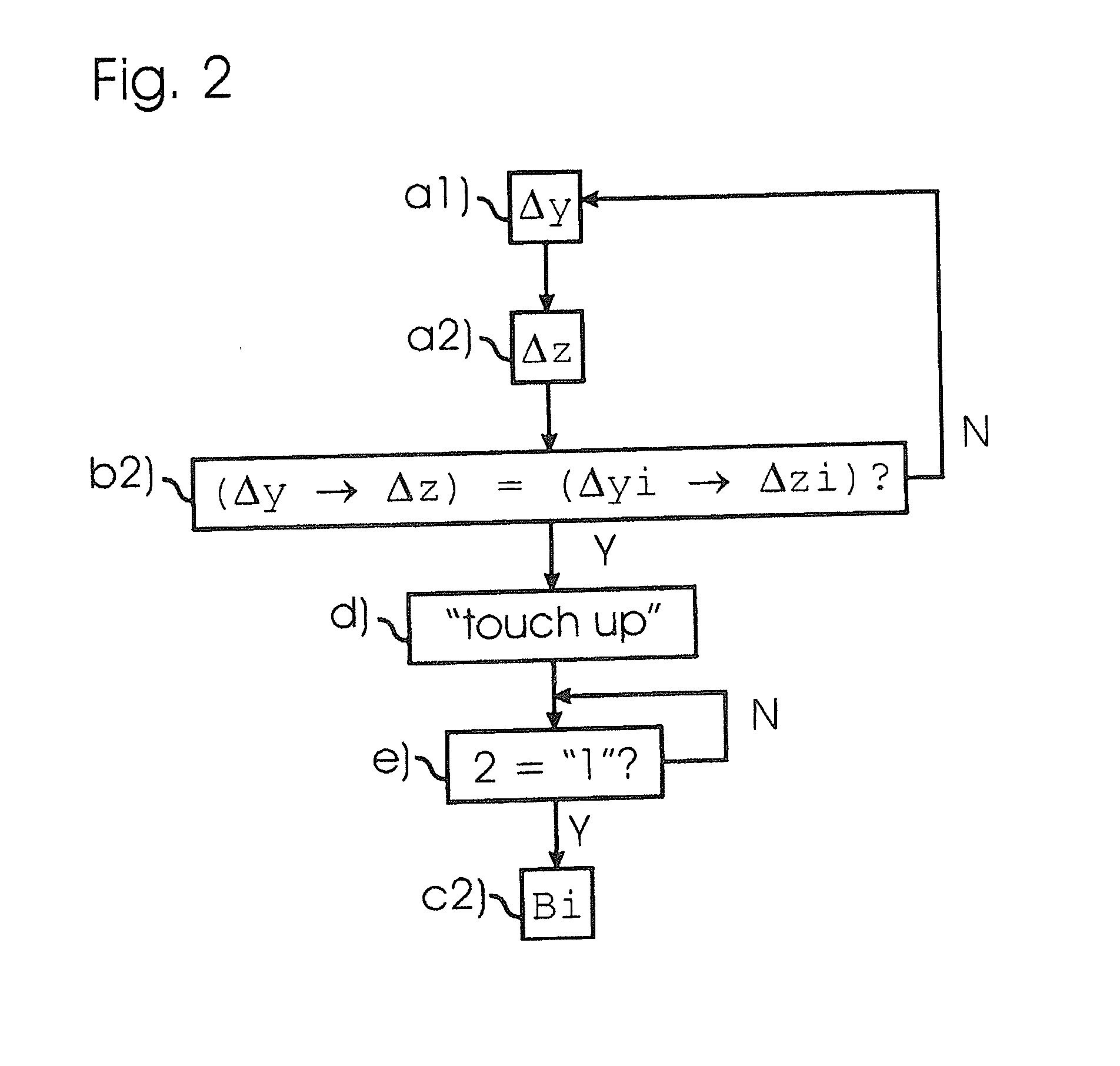Method and device for command input in a controller of a manipulator
a technology of a controller and a command input, which is applied in the direction of adaptive control, program control, instruments, etc., can solve the problems of increasing the transfer cost between the input apparatus and the controller, hindering the operator in direct programming, and requiring additional equipment, so as to achieve the effect of increasing the safety of the command inpu
- Summary
- Abstract
- Description
- Claims
- Application Information
AI Technical Summary
Benefits of technology
Problems solved by technology
Method used
Image
Examples
Embodiment Construction
[0039]A four-axis robot is schematically shown in FIG. 1, the body 1.1 of which can rotate around the y-axis of a coordinate system fixed to the robot. An upper arm 1.2 connected with the body rotates relative to this around an axis parallel to an x-axis of the coordinate system fixed on the robot. For this a lower arm 1.3 and an end effector 1.4 are attached to this upper arm or to the lower arm such that said lower arm 1.3 and end effector 1.4 can be rotated relative to the upper arm 1.2 around axes parallel to themselves. A guide handle 2 is attached to an end effector 1.4. A controller of the manipulator is arranged in the body 1.1, in which controller a command input device is implemented according to one embodiment of the present invention.
[0040]The robot 1 is flexible, meaning that it can be moved manually by an operator. For this, in the four movement axes of the robot 1 torques can be executed on the axes by force-regulated motors (not shown), which torques compensate for t...
PUM
 Login to View More
Login to View More Abstract
Description
Claims
Application Information
 Login to View More
Login to View More - R&D
- Intellectual Property
- Life Sciences
- Materials
- Tech Scout
- Unparalleled Data Quality
- Higher Quality Content
- 60% Fewer Hallucinations
Browse by: Latest US Patents, China's latest patents, Technical Efficacy Thesaurus, Application Domain, Technology Topic, Popular Technical Reports.
© 2025 PatSnap. All rights reserved.Legal|Privacy policy|Modern Slavery Act Transparency Statement|Sitemap|About US| Contact US: help@patsnap.com



